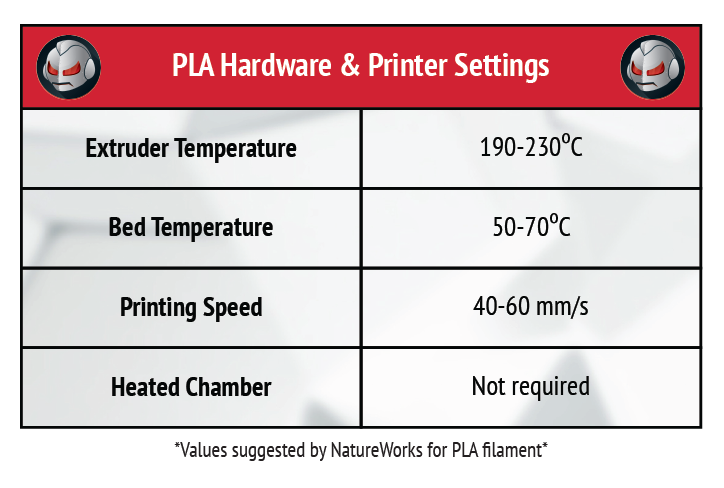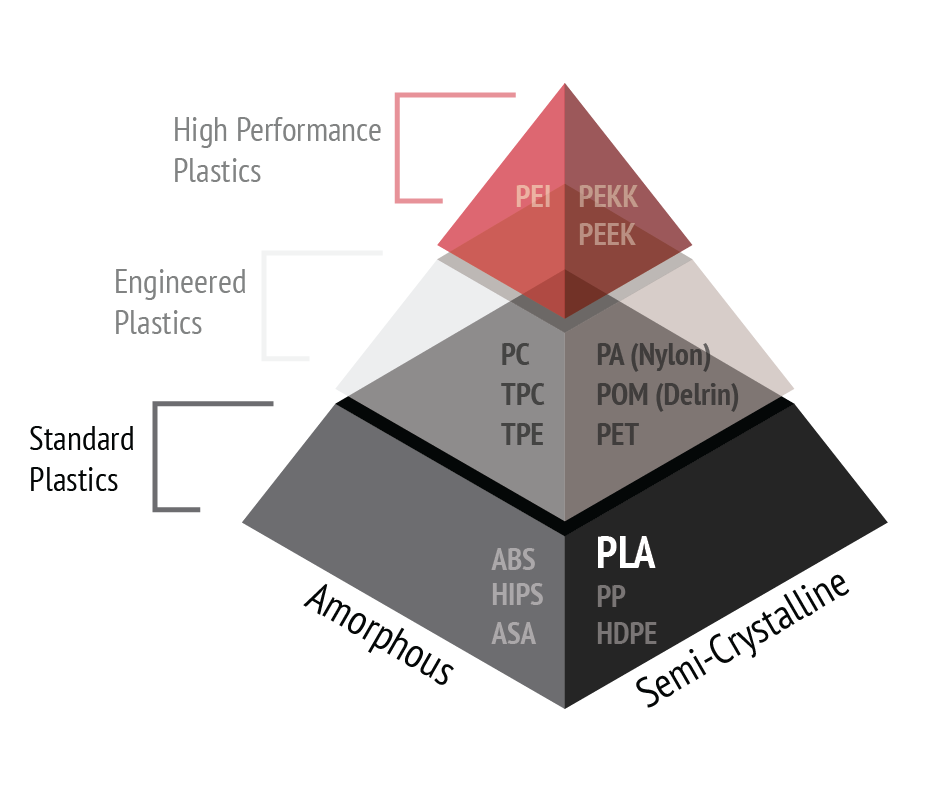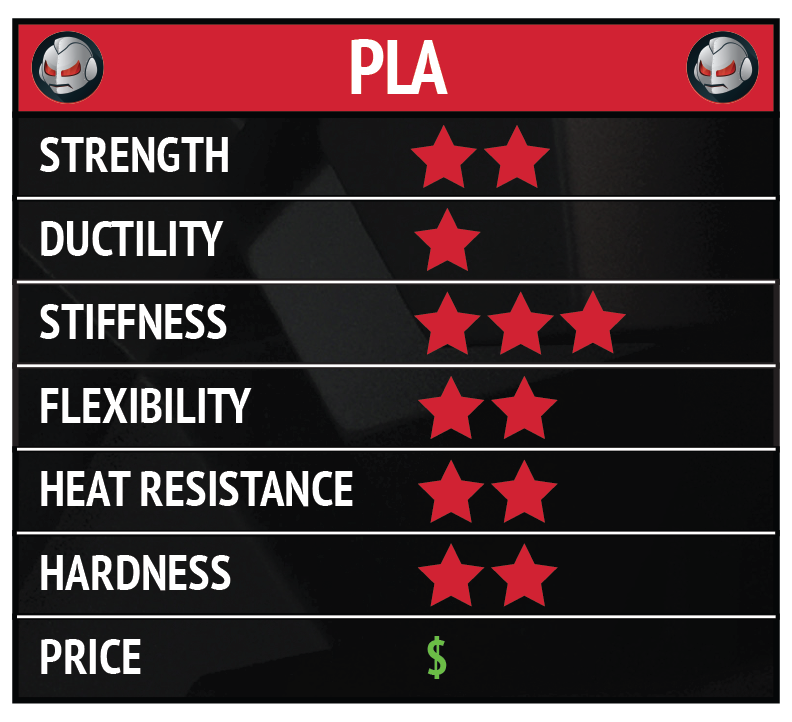Ready to find out more?
Drop us a line today for a free quote!
3D Printed PLA Applications
PLA is an easy-to-use 3D printing material for many who are just starting their journey. It can be printed at low temperatures, does not require heated beds or environmentally controlled build chambers, and can be purchased in filament form at a low cost.
PLA does, however, exhibit low heat resistance relative to other 3D printing materials, and may not meet the mechanical requirements of your application due to it’s mediocre strength properties. PLA parts may perform adequately for less-demanding applications, but should carefully be considered when higher functionality is required.

Disadvantages of PLA
- It has a slow decomposition rate when not in a controlled environment (it will decompose in three months with specific composting conditions, otherwise could take between 100-1,000 years)
- The world’s rising population raises the concern of whether it’s ethical to spend entire crops of corn, for example, in the production of bioplastics, rather than feeding the population in need.
- It heavily relies on the use of transgenic crops with concerns around the rise in monoculture and the lack of long-term testing.
- Mixing it with traditional plastics can contaminate the recycling process.
- PLA plastic will behave in a brittle way unless blending it with less environmentally friendly polymers.
- When compared to petroleum-based plastics, bioplastics such as PLA are deficient in their strength and crystallinity.
PLA Material Properties
Typical properties for molded PLA test specimen are as follows:
- Tensile Strength: 38 - 47.8 MPa
- Tensile Modulus: ≅ 4,200 MPa
- Elongation at Break: 41.3 - 63.8%
- Elongation at Yield: ≅ 2.00%
- Flexural Strength: ≅ 85 MPa
- Flexural Modulus: ≅ 3,280 MPa
- Glass Transition Temp: ≅ 53 °C
- Heat Deflection Temp (1.8 MPa): ≅ 80 °C
- Hardness: ≅ Shore D 66
- Density: 1.08 - 1.12g/cc
Disclaimer: The above information is provided in good faith. JuggerBot 3D assumes no obligation or liability for the accuracy or completeness of the information supplied in this document. It is solely the customers responsibility to determine if the product and information in this document are appropriate for the customers end use. Responsibility for the use, storage, handling, and disposal of the products herein is that of the purchaser or end user.

Filament 3D PRINTER REQUIREMENTS AND SETTNGS
PLA is a material that generally prints better in lower temperatures, in contrast to most other filaments, and is a great candidate for printing with an open build chamber. In some cases, operators printing PLA on printers with enclosed chambers may find benefit in allowing heat to escape from the chamber. A controlled-chamber is preferred for best success. PLA generally exhibits low thermal shrinkage, as well.
While the ranges may not vary greatly from brand of material to another, operators should always check for the suggested printing parameters, provided by the material manufacturer. Your machine manufacturer can also be a great resource for processing knowledge.

NatureWorks suggests the extruder temperature be set between190℃ and 230℃. A heated bed is not required, however, the manufacturer recommends setting the bed temperature between 50℃ and 70℃, if possible. More can be found by contacting the manufacturer or their distributor, MatterHackers.

3D PRINTING WITH PLA - THE PROCEDURE
Filaments.ca states that drying PLA filament is essential prior to printing. They recommend prepping the bed with adhesive with high water content, painter’s tape, PEI sheets, acrylic, or BuildTak for best results.


